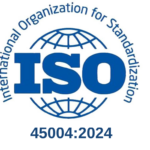Whether your organisation is aiming to have its Safety Management System comply with ISO 45001 OHS Management Systems Standard, the Self-Insurance National Assessment Tool (NAT), or simply to be compliant with the applicable state Work Health and Safety Act (WHS), one of the core requirements is to keep up to date with knowledge of WHS matters. “WHS matters” is a very broad term but certainly includes being kept up to date with WHS legislative and regulatory developments, changes and updates.
What is Required?
- ISO 45001 for example, requires organisations to have access to up-to-date legal requirements that are applicable to its OHS hazards and risks, and to consider these when establishing, implementing and maintaining its OHS management System.
- The NAT has several references relating to legislative and regulatory requirements with the aim of ensuring compliance with current legal, technical and industry standards, and Codes of Practice to identify whether alterations are needed to current work methods.
- The WHS Act in Queensland places a duty on Officers to ensure there are appropriate processes for receiving and considering information regarding hazards and risks, as well as mandating compliance to applicable Codes of Practice for managing the hazards and risks arising from the organisation’s work activities.
What To Do?
Larger organisations tend to utilise their in-house legal team or have a relationship with an external legal firm to provide them with regular legislative updates. Alternately, there are many online services that provide daily and weekly communications of regulatory changes, industry updates and WHS news such as recent prosecutions and events. Having a subscription with one of these services and receiving this up-to-date information however, is only part of the story. It is how this information is used is where the rubber really hits the road.
Organisations must:
- Communicate the regulatory changes to the persons within the organisation who are exposed to the hazards and risks, as well as to the persons with the accountability for managing the hazards and risks.
- Consider the impacts of the changes on work methods, including any additional resources (human, financial, tools and equipment) that may be required.
- Implement the necessary changes to maintain compliance and review the updated changes to ensure that hazards and risks continue to be managed effectively, as well as to identify if there has been any inadvertent risk that has been introduced as a result of changes that needs to be addressed.
Many organisations have developed and implemented a Legislative Updates Procedure that often includes a simple process flow chart setting out the process for managing changes to legislation. An important aspect of this is to identify the difference between ‘major’ and ‘minor’ updates. A ‘major’ update will often require a risk assessment and greater consultation before implementing any change, whereas a ‘minor’ update may simply require updating a procedure and communicating the changes made.
Please contact QRMC for more information.











